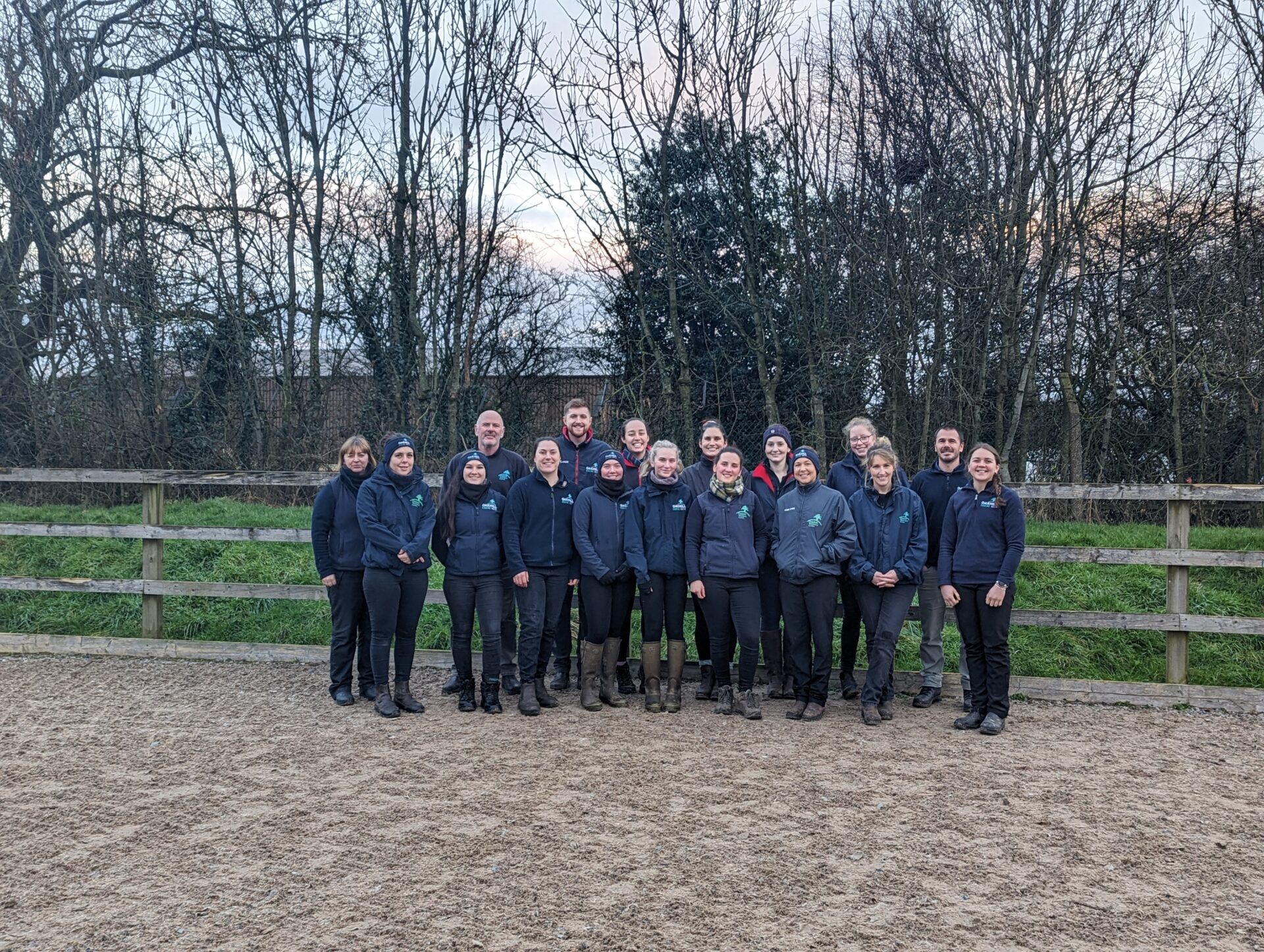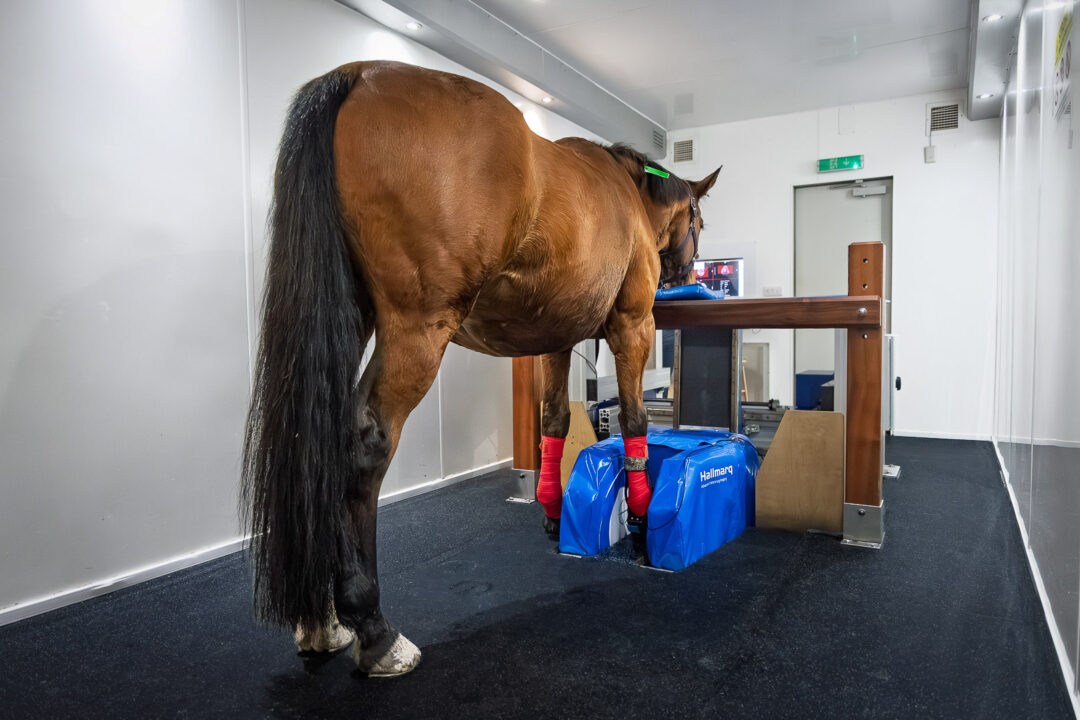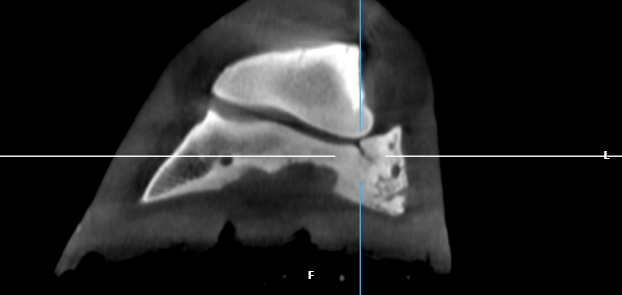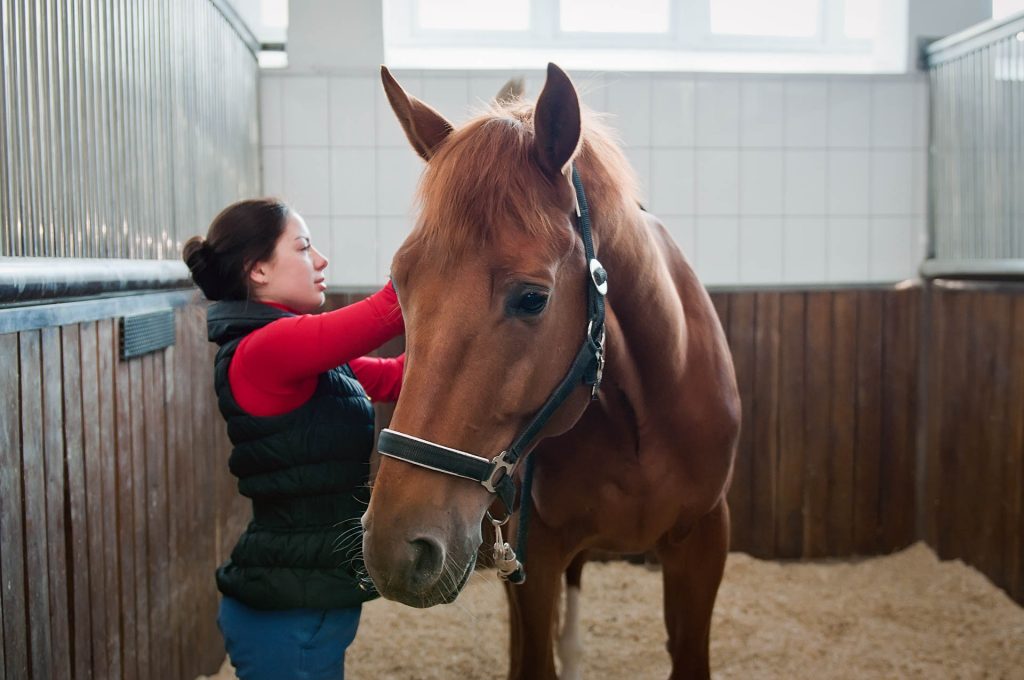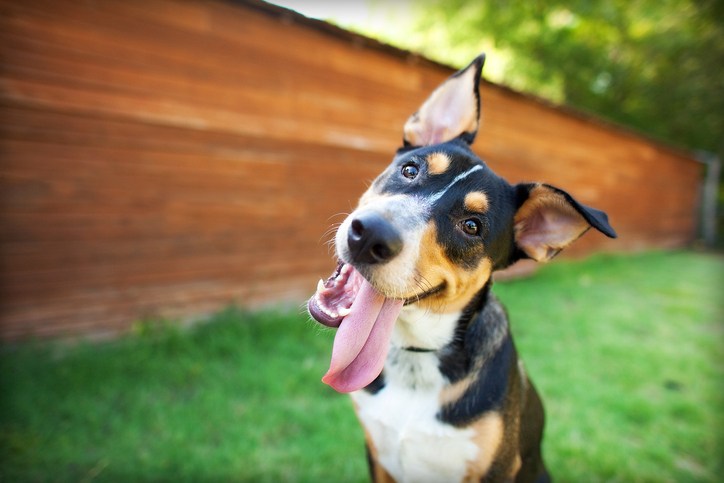Summary
Founded in 1974, Oakhill Veterinary Centre is proud to remain independently owned. Dedicated to horse health, their team of orthopaedic and equine surgery specialists has utilised Hallmarq’s Standing Equine MRI in lameness diagnosis for almost a decade.
Fiercely independent
2024 marked a major milestone for the team at Oakhill Equine Vets. Founded 50 years earlier in 1974, the team recently celebrated half a century of delivering equine excellence to horses in Lancashire and the surrounding area.
In a sea of rapidly growing corporate veterinary practices, Oakhill remains one of the few in the area that is still independent. Owned and run by a small group of dedicated vets, Oakhill firmly believes that independent practice is always the best choice for horse and owner as Director Guy Hinnigan, BVSc CertES(Orth) DipECVS MRCVS, explains:
Remaining independent – and entirely run by veterinary surgeons – means we can provide a premium service at a fair price to our clients.”
Your horse is in safe hands with Oakhill’s team of equine-only vets. Their experts include two ECVS Diplomate equine surgery specialists, and RCVS Advanced Practitioners in Medicine, Dentistry, Orthopaedics, and Equine Practice. All are supported by a team of highly trained registered equine veterinary nurses, and yard/nursing assistants.
It’s this dedication that ensures repeat business from happy horse owners who feel they are far more than just the next in line.
Key to building this goodwill, and retaining a loyal customer base, is Oakhill’s penchant for sharing their vast wealth of knowledge.
From primary school visits, and equine first aid courses, to professional accreditation and awareness for other equine professionals, Oakhill understands the value of involving their horse-loving community.
Divisional Director Rosie Owen, BVSc CertES(Orth) DipECVS MRCVS, Guy and the team also strive to maintain a friendly, ethical referral service. This ensures that surrounding veterinary practices also benefit from the advanced imaging services Oakhill provides to their own clients.
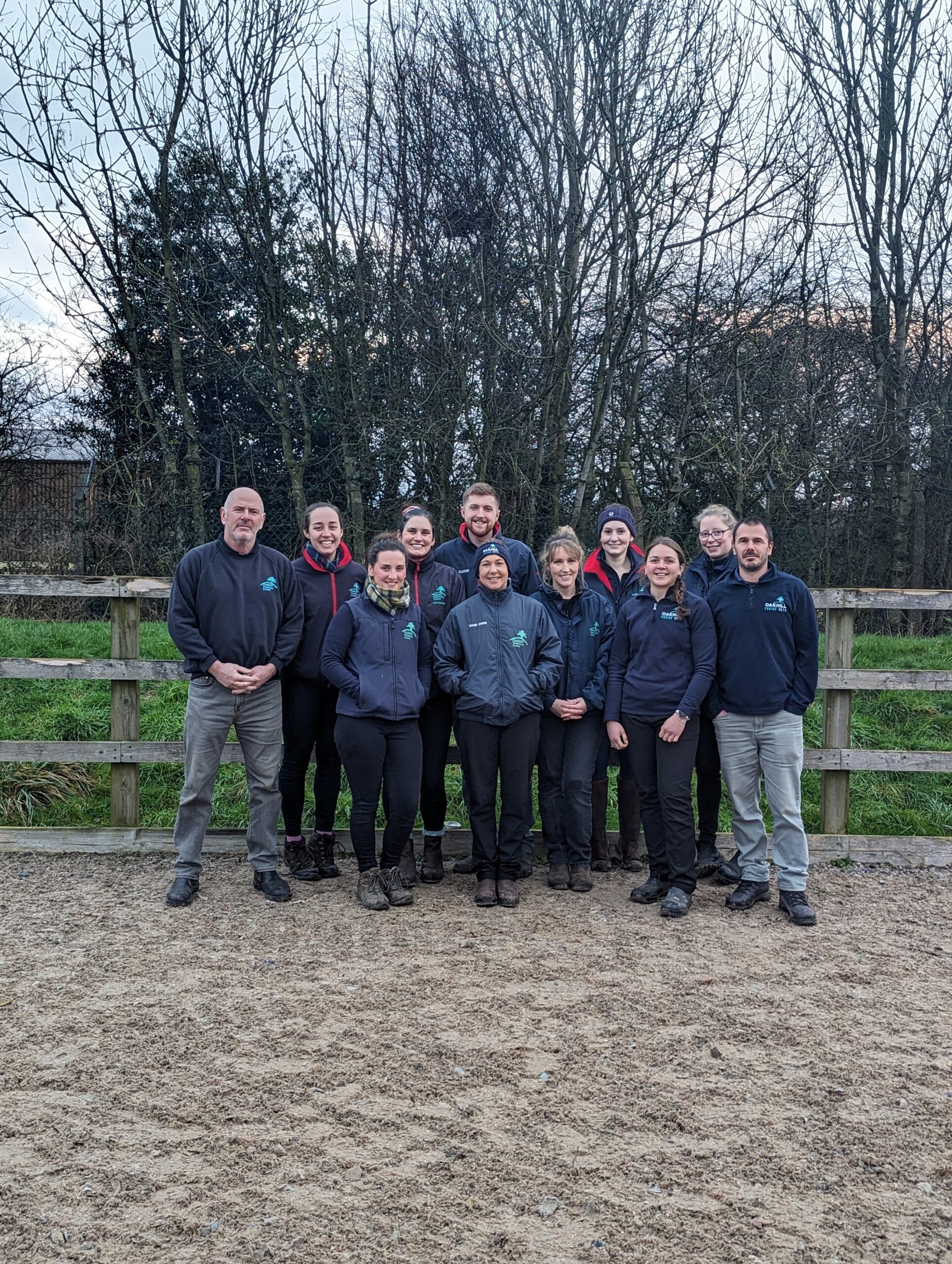
Why Standing Equine MRI (sMRI) ?
The decision to add a Hallmarq Standing Equine MRI to their advanced diagnostics suite at Oakhill was driven by a desire to achieve the highest possible standards of lameness diagnostics and imaging for their clients. In addition, it was important to offer this service to those patients referred to them from neighbouring practices.
With the term success highly subjective, we asked Rosie what it means to them. In typical Oakhill style, the well-being of the patient topped that list with a happy horse and owner as the result. As Rosie states:
Standing Equine MRI has been an absolute game-changer for Oakhill. It provides us with the detailed images we need to make an informed diagnosis. Removing the guesswork means a tailored treatment plan can be made for every patient we see. It’s rewarding for us as a team and reassures our horse owners that they are in safe and capable hands.”
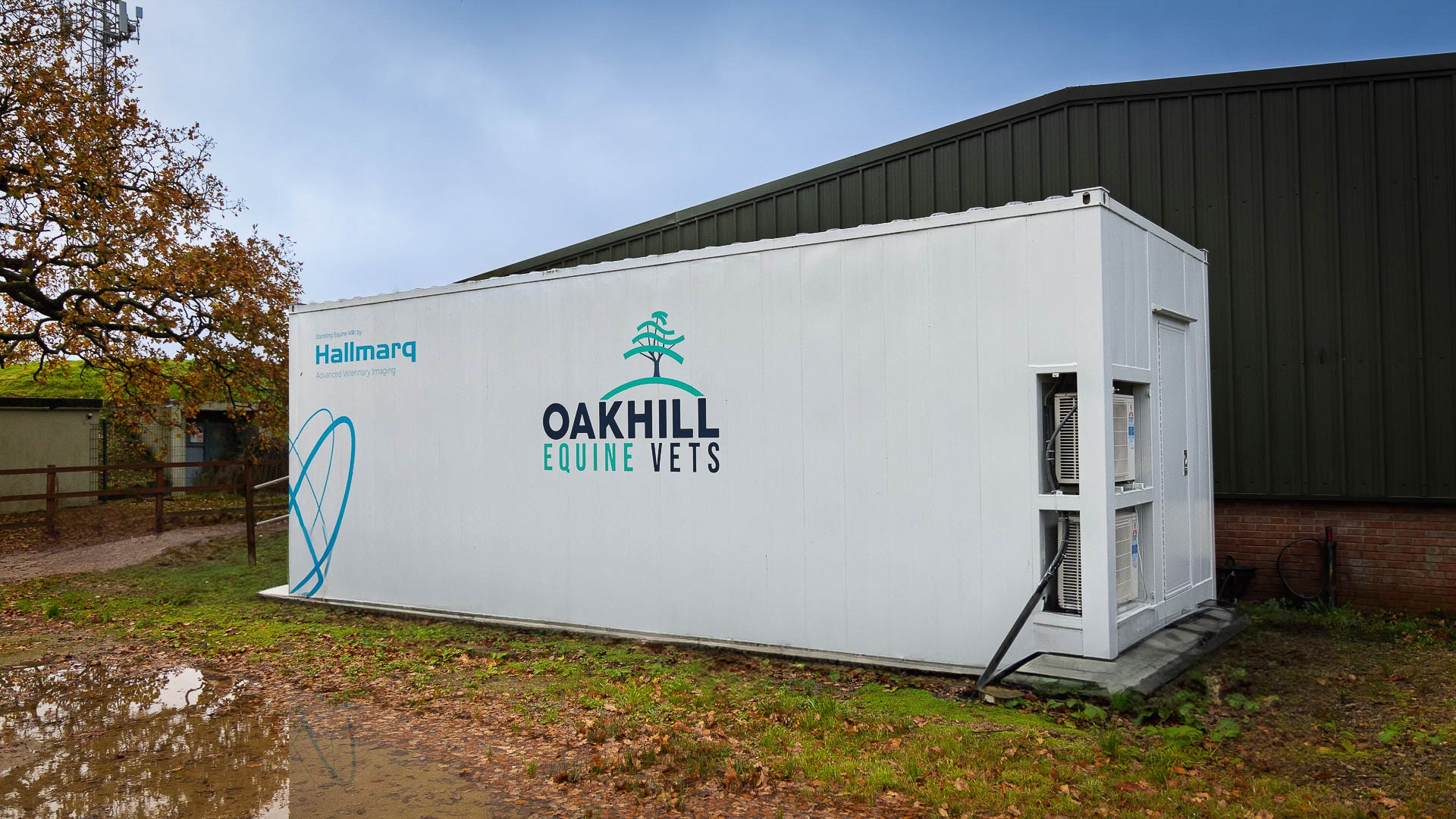
From a single scan per month in those early days to an average of 10 per month today, sMRI has undoubtedly helped Oakhill drive its orthopaedic caseload. And, if success can be measured in numbers, then scan volume data supports the practice’s initial decision to install sMRI all those years ago:

This data illustrates just how seasonality affects the number of horses scanned in the clinic each month. For example, competition season may see an increase in referrals as sport horse disciplines carry a higher risk of lameness and soft tissue injuries. Numbers then tend to fall over the winter months when horses are often stabled, with less turnout and a steadier workload. Oakhill’s lameness caseload for 2024 saw the seasonal highs and lows that we would expect. Across the year, however, the team scanned their expected average of 10 cases each month with sMRI.
Standing Equine MRI provides the answers for Nev
Over the decade since its installation, the team at Oakhill has seen everything possible in equine lameness diagnosis. From establishing the true picture of navicular bone disease to identifying subtle pathology in the proximal suspensory ligaments of dressage horses, the range of cases is vast. Nev is just one such case where sMRI provided the answers.
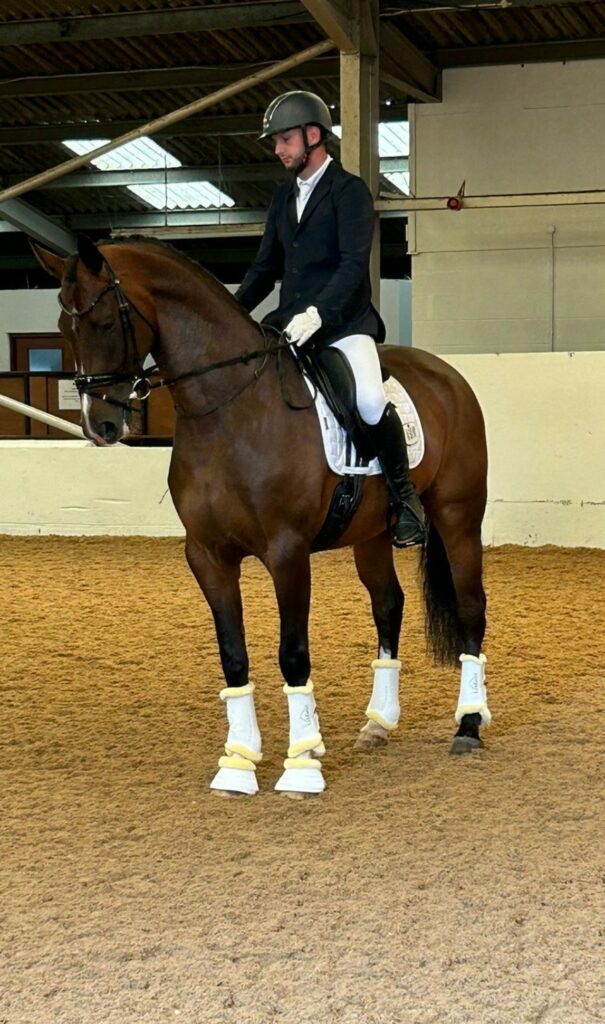
‘Nev’ is a very much loved 6-year-old Warmblood gelding who presented with a 5/10 lameness on the right forelimb having been a lunatic running around the field with his pals!
Usually, with this degree of lameness, there is some swelling or pain on palpation of the limb but, in this case… there was nothing.
Experienced lameness veterinary surgeon Nikki Platt did some nerve and joint blocks (very carefully), to isolate the problem to the base of the knee. Once she knew it was at this location, imaging could commence. Nikki X-rayed the area and performed an ultrasound examination of the surrounding tissues. Absolutely nothing abnormal was present.
Thankfully, sMRI is available for these difficult cases, where the pathology affecting an anatomical region is not available with standard imaging equipment.
With his owner’s consent, Nev was placed in the MRI magnet for scans of the right forelimb. The 600 images obtained were sent to imaging specialist Meredith Smith for interpretation. Merry holds a European Diploma in imaging and is a world-leading expert in her field. She was able to comb through the hundreds of images and look for abnormal signal “inflammation” in the region scanned. This revealed a hairline, fissure fracture extending down the top of the canon bone from the lower knee joint.
Even with the benefit of hindsight, this injury was not visible in the X-rays obtained as the fracture line was so narrow. With this information, the Oakhill team could happily inform Nev’s owner that the fracture would heal. Importantly, they were able to aid a full recovery with a very specific, tailored rehabilitation plan.
An MRI scan is not always needed, but when it is, it can be invaluable in getting owners off the rollercoaster of the unknown, which can be an incredibly stressful place to be!”
What next for Oakhill?
It’s been almost a decade since Oakhill installed their Hallmarq Standing Equine MRI. In that time, the practice has seen the benefits of offering the gold standard in advanced imaging of the equine foot. Has their decision to add low-field MRI to their practice made a difference? It’s a resounding yes! Plans for the future include the expansion of their current premises with new stables, the introduction of laparoscopic surgery and possibly even a CT machine in the distant future.
We look forward to seeing what 2025, and the years following, bring for Oakhill and are delighted to support their advanced imaging journey all the way.
For more information on Oakhill Equine Vets click here
For more information on Hallmarq’s Standing Equine MRI click here
Summary
Founded in 1974, Oakhill Veterinary Centre is proud to remain independently owned. Dedicated to horse health, their team of orthopaedic and equine surgery specialists has utilised Hallmarq’s Standing Equine MRI in lameness diagnosis for almost a decade.
